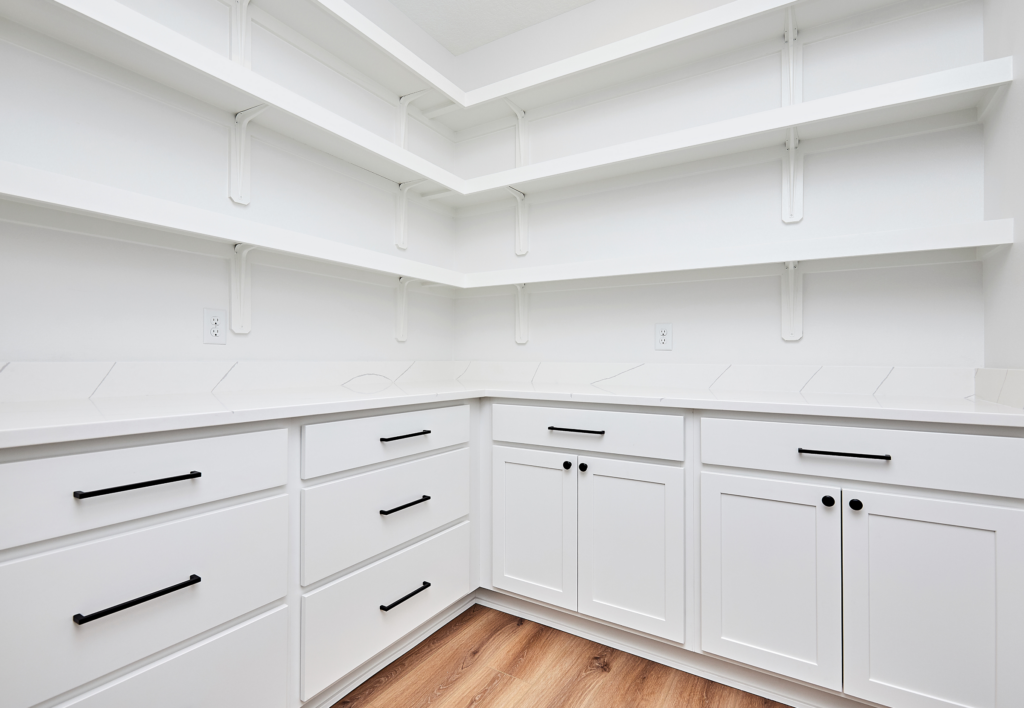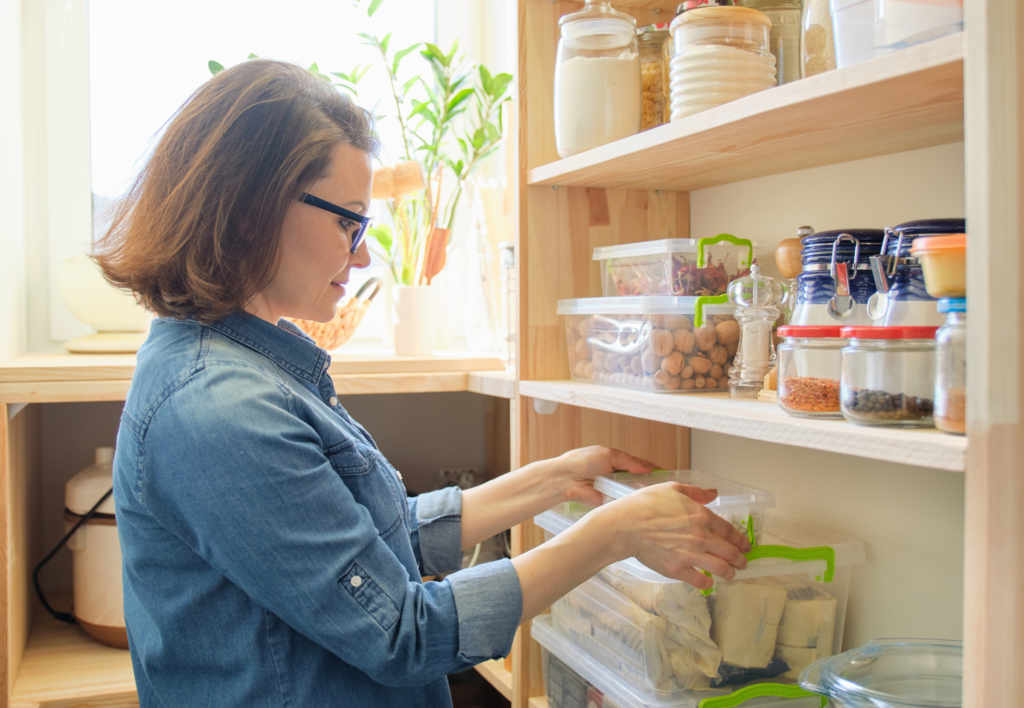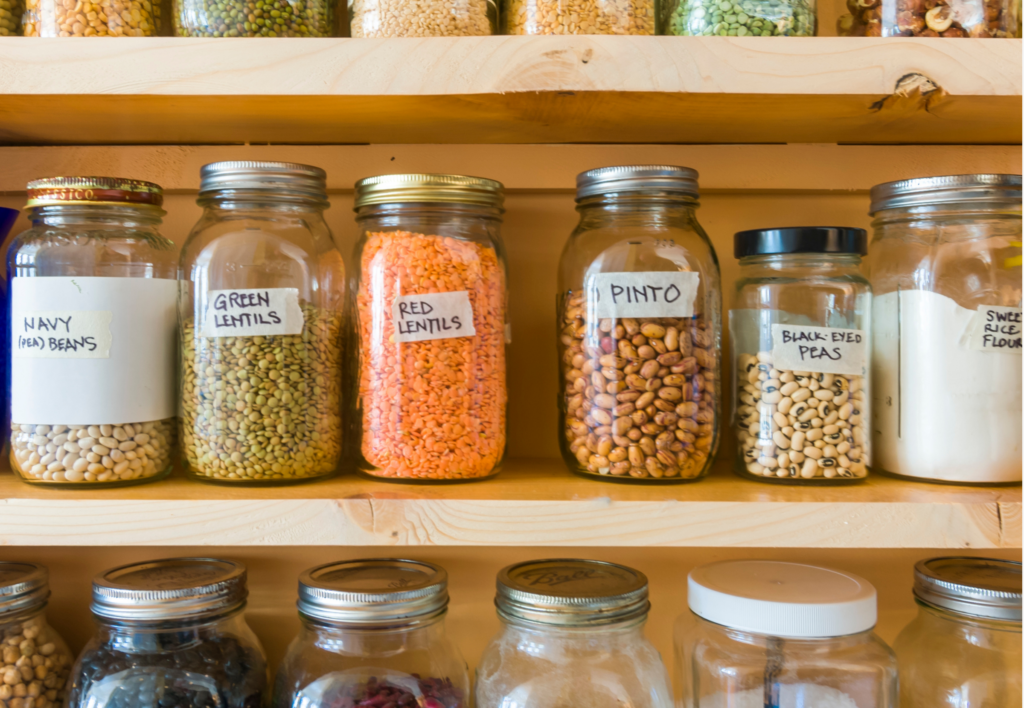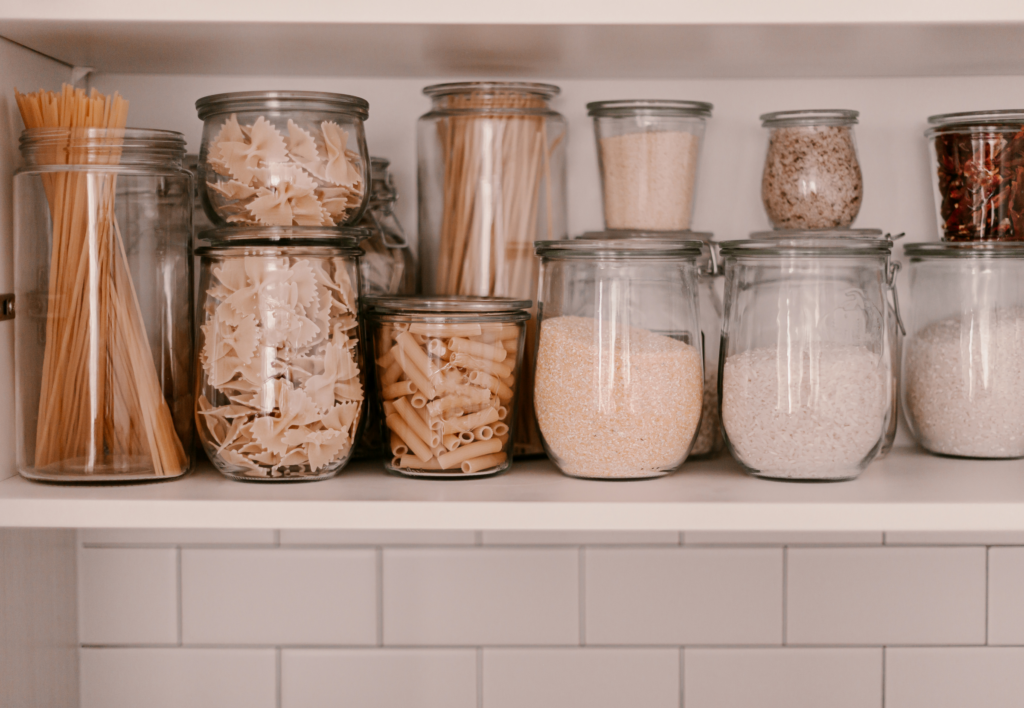10 Top Tips to Organize Your Pantry for Effortless Meal Prep!
An organized pantry is the secret ingredient to seamless meal prep. It saves you time, reduces food waste, and makes cooking more enjoyable. Imagine easily finding every spice, grain, and condiment without the hassle of sifting through a cluttered cupboard.
In this post, we’ll walk you through 10 practical tips to transform your pantry into a meal prep haven. Whether you’re a seasoned chef or a busy parent, these strategies will help you streamline your kitchen routine and make mealtime a breeze.
Start with a Clean Slate
Before you can organize, you need to start with a clean slate. This means taking everything out of your pantry. Yes, everything. It might seem daunting, but it’s the only way to truly assess what you have and what you need. Here’s how to tackle this step:
- Empty the shelves: Clear out all items and lay them out where you can see them. This will give you a sense of the volume and variety of your pantry goods.
- Clean the shelves: Wipe down all surfaces with a damp cloth and a mild cleaner. Don’t forget the corners and hard-to-reach areas where crumbs and dust accumulate.
- Declutter: Get rid of expired items, stale snacks, and anything else you haven’t used in the past year. If you have unopened, non-perishable items that you won’t use, consider donating them to a local food bank.
- Take inventory: Make a list of what you have left. This will be invaluable when you go to reorganize and when you’re making future grocery lists.
With a clean and empty pantry, you’re now ready to put things back in an organized manner that makes meal prep a cinch.

Categorize Your Pantry Items
Creating categories in your pantry is like putting together a puzzle where everything has its place. Grouping similar items together not only looks tidy but also helps you quickly grab what you need when you’re in the middle of cooking. Here are some category ideas and tips to get you started:
- Sort by type: Place all your baking ingredients together, all your canned goods in another spot, and snacks in their own zone. Think about how you use your pantry items and group them in a way that makes sense for your cooking habits.
- Use shelf organizers: These handy tools can help you define categories within your pantry. Use them to separate different groups of items and to prevent small items from getting lost in the shuffle.
- Consider usage frequency: Place items you use often at eye level and within easy reach. Reserve the higher and lower shelves for less frequently used items.
- Keep kid-friendly snacks accessible: If you have children, make sure their favorite snacks are on a shelf they can reach without help. This encourages independence and helps avoid daily snack-time scavenger hunts.
By categorizing your pantry items, you’re setting the stage for a more efficient cooking process and ensuring that everything you need is right at your fingertips.
Use Clear Containers for Bulk Items
Transferring bulk items like flour, sugar, pasta, and rice into clear, airtight containers is not only aesthetically pleasing but also incredibly functional. Here’s why clear containers can revolutionize your pantry organization:
- Visibility: With one glance, you can see exactly what you have and how much is left. This helps prevent overbuying and lets you quickly grab what you need without rummaging through packages.
- Freshness: Airtight containers keep your food fresher for longer by sealing out moisture and pests. This means less food waste and better-tasting ingredients.
- Space efficiency: Clear containers can be stacked and are often designed to fit together neatly, maximizing your shelf space. This is especially helpful in small pantries where every inch counts.
- Consistency: Uniform containers create a tidy look and can be labeled for quick identification. This visual consistency can also help you maintain organization over time.
When choosing containers, consider the size and shape that will work best for your space and the types of bulk items you typically store. Square or rectangular containers are usually space-efficient and stack well.

Implement a First-In, First-Out (FIFO) System
The First-In, First-Out (FIFO) method is a staple of professional kitchens and grocery stores, and it’s perfect for home use as well. This system ensures that you use the oldest items first, reducing the risk of expired food and waste. Here’s how to implement FIFO in your pantry:
- Date your purchases: Use a marker to write the purchase or expiration date on items as you put them in your pantry.
- Organize by date: Place newer items at the back and move older items to the front. This makes it more likely that you’ll use the oldest items first.
- Use bins or baskets: These can be helpful for grouping items with similar expiration dates. Simply pull out the bin to access the older items in the back before using the newer ones in the front.
- Regular checks: Make it a habit to periodically check dates and bring forward any items that need to be used soon.
By keeping your pantry organized with the FIFO system, you can avoid the frustration of finding expired food buried in the back of your shelves.
Label Everything
Labels are the finishing touch in your pantry organization. They help everyone in the household know where things belong and make it easier to find what you need at a glance. Here’s how to create an effective labeling system:
- Choose a labeling method: You can use a label maker, purchase pre-made labels, or get creative with chalkboard labels or washi tape.
- Be specific: Instead of just labeling a bin “snacks,” try “granola bars” or “dried fruit” to make it clear what’s inside.
- Include dates: For items that don’t have a clear expiration date visible, add a label with the date you opened it so you’ll know when it’s time to toss.
- Make it a family affair: Get your family involved in the labeling process. This can help kids learn where things go and encourage them to put items back in the right place.
With everything labeled, your pantry will not only look organized but function like a well-oiled machine during meal prep.

Utilize Door and Wall Space
Often overlooked, the inside of your pantry door and any available wall space can be prime real estate for additional storage. Here’s how to make the most of these areas:
- Over-the-door organizers: These are perfect for storing smaller items like spice jars, packets of seasonings, or even small snack bags. Choose an organizer with multiple pockets or adjustable shelves to fit a variety of items.
- Wall-mounted racks: Install racks to hold items like oils, vinegars, and sauces that you reach for frequently. This keeps them off the shelves but still within easy reach.
- Magnetic strips or boards: A magnetic strip mounted on the wall can hold metal tins of spices or small jars with metal lids. This not only saves space but also adds a decorative element to your pantry.
By using door and wall space wisely, you can free up shelf space for larger items and keep your most-used ingredients within arm’s reach.
Make Use of Adjustable Shelving
Adjustable shelving can be a game-changer in your pantry, allowing you to customize the space to fit your storage needs. Here’s how to optimize your shelving:
- Assess your needs: Take a look at your pantry items and determine how much space you need between shelves to accommodate them comfortably.
- Rearrange as needed: Don’t be afraid to move shelves around. What works one month might need to be adjusted the next as your pantry items change.
- Use shelf risers: If adjustable built-in shelving isn’t an option, consider using shelf risers or stackable shelves to create more levels and make use of vertical space.
- Keep it accessible: Make sure that the items you use most are on the shelves that are easiest to reach, typically between waist and shoulder height.
With adjustable shelving, you can ensure that every item in your pantry has a home and that no space is wasted.
Keep a Running Inventory
A running inventory of your pantry items can help you avoid purchasing duplicates and make meal planning easier. Here’s how to maintain an inventory:
- Use a whiteboard or notepad: Keep it mounted on the pantry door or wall, and update it as you use items and add new ones.
- Try an app: There are several pantry inventory apps available that allow you to track what you have on hand, expiration dates, and even create shopping lists.
- Make it a routine: Update your inventory regularly, such as after grocery shopping or while meal planning for the week.
- Involve the family: Teach family members to update the inventory when they remove items from the pantry. This can help ensure that your list is always up-to-date.
By keeping an inventory, you’ll have a clear idea of what’s in your pantry at all times, making it easier to whip up meals without any last-minute grocery runs.
Dedicate Zones for Meal Prep Staples
Creating specific zones for your most-used meal prep staples can streamline your cooking process significantly. Here’s how to establish and maintain these dedicated zones:
- Identify your staples: Think about the items you use almost every time you cook. This might include oils, vinegars, your favorite spices, and frequently used grains or pastas.
- Choose a prime location: Set aside a section of your pantry that’s easily accessible for these items. This could be a particular shelf or a pull-out drawer at eye level.
- Use organizers: Consider using turntables for oils and vinegars or tiered spice racks so you can see everything at a glance. Bins or baskets can keep similar items grouped together.
- Maintain the system: After each meal prep, take a moment to return everything to its dedicated zone. This habit will save you time and frustration in the long run.
By having a designated spot for your meal prep essentials, you’ll be able to quickly grab what you need without searching, allowing for a more efficient and enjoyable cooking experience.

Regular Maintenance is Key
The final step in keeping your pantry organized for easy meal prep is to perform regular maintenance. Here’s how to keep your pantry in top shape:
- Schedule a quick weekly tidy: Set aside a few minutes each week to straighten up your pantry. This might involve wiping down shelves, checking expiration dates, or reorganizing items that have been moved.
- Do a deeper clean seasonally: Every few months, take the time to do a more thorough organization. This could involve reassessing your storage needs, decluttering, or updating your inventory.
- Stay adaptable: Your pantry needs may change over time, so be willing to adjust your organization system as necessary. What works for summer meal prep might need to be tweaked for winter.
- Involve the whole household: Make sure everyone knows the system and contributes to maintaining it. This shared responsibility will help keep your pantry organized long-term.
Regular maintenance will ensure that your pantry remains a well-oiled machine, ready to support you in your meal prep endeavors. With a little bit of effort, you can keep your pantry in a state that makes mealtime preparations not just easy, but a true pleasure.
Let Us Know How We’re Doing!
Did this expertly prepared resource answer your question?
Do you have another question about home maintenance, home improvement projects, home appliance repair, or something else?
Get more information, send in questions and keep the discussion going by contacting the I’ll Just Fix It Myself company customer service team at at 1-800-928-1490 or Email us at [email protected]
